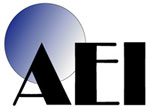FAS Presents at ASCE Conference
 FAS recently chaired a session at the American Society of Civil Engineers Architectural Engineering Institute's Annual Conference in Denver, focusing on FAS's research on multi-story applications of Cementitious Structural Insulated Panels.
FAS recently chaired a session at the American Society of Civil Engineers Architectural Engineering Institute's Annual Conference in Denver, focusing on FAS's research on multi-story applications of Cementitious Structural Insulated Panels.
John Millhone, a senior advisor to FAS, made a very good presentation about the current energy crisis, and how and why buildings need to play an important role in its solution. His presentation gets to the core of FAS's mission, and served as a great preface to FAS's work in policy and new technologies. John's powerpoint can be found here.
Eric Tompos, the Vice President of NTA Inc., followed John with a presentation on the sources of design information for engineering SIPs, as well as the ways SIPs typically perform. Eric's discussion was an excellent lesson for any designer planning to use panels. His powerpoint can be found here (with a supplementary, more comprehensive presentation that describe the methods for developing an engineered design method for SIPs in detail found here).
Khalid Mosalam, a professor Civil and Environmental Engineering out at UC Berkeley followed Eric. Professor Mosalam's presentation explained much of the work he's been doing in conjunction with FAS. He explained the current approach to seismic evaluation, the development of a pseudo-dynamic approach that is cheaper than large scale shake table tests, and then how that applies to SIPs and CSIPs. Mosalam's presentation can be found here, and more information about his work can be found here and here.
FAS's Brian Doherty concluded the presentation with a discussion of our Pankow research - how to apply CSIPs to multi-story buildings. The presentation can be found here. The followup discussion to the presentations was good - some very interested people from all different segments of the building industry, from engineers to construction managers.
Overall, the presentation provided a good overview of FAS's CSIP research to the architectural and engineering communities - two segments that must learn about CSIPs and other advanced technologies for them to take a larger, more robust role in future energy effient buildings.
